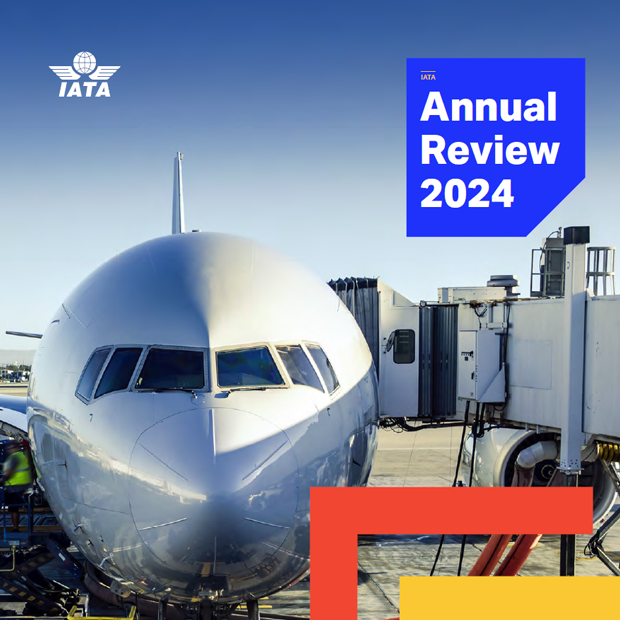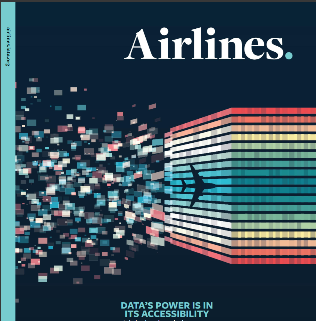
Translations:
La reacción de los gobiernos a ómicron amenaza la recuperación emergente (pdf)
国际航协:奥密克戎致防疫措施收紧 冲击经济复苏 (pdf)
Respostas dos governos à variante ômicron ameaçam a recuperação dos voos de passageiros (pdf)
La réaction gouvernementale au variant Omicron menace la reprise naissante (pdf)
Geneva- The International Air Transport Association (IATA) announced that the recovery in air travel continued in October 2021 with broad-based improvements in both domestic and international markets. It also warned that the imposition of travel bans by governments, against the advice of the WHO, could threaten the sector’s recovery.
Because comparisons between 2021 and 2020 monthly results are distorted by the extraordinary impact of COVID-19, unless otherwise noted all comparisons are to October 2019, which followed a normal demand pattern.
- Total demand for air travel in October 2021 (measured in revenue passenger kilometers or RPKs) was down 49.4% compared to October 2019. This was improved over the 53.3% fall recorded in September 2021, compared to two years earlier.
- Domestic markets were down 21.6% compared to October 2019, bettering the 24.2% decline recorded in September versus September 2019.
- International passenger demand in October was 65.5% below October 2019, compared to a 69.0% decline for September versus the 2019 period, with all regions showing improvement.
“October’s traffic performance reinforces that people will travel when they are permitted to. Unfortunately, government responses to the emergence of the Omicron variant are putting at risk the global connectivity it has taken so long to rebuild,” said Willie Walsh, IATA’s Director General.
Air Passenger Market Detail- October 2021
| OCT 2021 (% vs oct 2019) |
world share1 | rpk | ask | PLF (%-PT)2 | PLF (LEVEL)3 |
|---|---|---|---|---|---|
| Total Market | 100% | -49.4% | -41.2% | -11.5% | 70.6% |
| Africa | 1.9% | -60.1% | -50.0% | -14.2% | 55.8% |
| Asia Pacific | 38.6% | -66.4% | -56.5% | -18.6% | 62.9% |
| Europe | 23.7% | -45.3% | -36.6% | -11.8% | 74.9% |
| Latin America | 5.7% | -33.6% | -33.0% | -0.7% | 80.9% |
| Middle East | 7.4% | -59.0% | -47.8% | -15.7% | 57.7% |
| North America | 22.7% | -26.3% | -19.7% | -6.8% | 76.9% |
1) % of industry RPKs in 2020 2) Change in load factor vs. the same month in 2019 3) Load Factor Level
Note: the seven domestic passenger markets for which broken-down data are avaiable for approximately 46% of global total RPKs and 84% of domestic RPKs.
Note: The total industry and regional growth rates are based on a constant sample of airlines combining reported data and estimates for missing observations. Airline traffic is allocated according to the region in which the carrier is registrated; it should not be considered as regional traffic.
International Passenger Markets
European carriers’ October international traffic declined 50.6% versus October 2019, much improved over the 56.5% drop in September compared to September 2019. Capacity dropped 41.3% and load factor fell 13.7 percentage points to 72.5%.
Asia-Pacific airlines saw their October international traffic fall 92.8% compared to October 2019, fractionally improved over the 93.1% decline recorded for September 2021 compared to two years ago. Capacity dropped 83.8% and the load factor was down 44.0 percentage points to 35.7%, the lowest among regions by far.
Middle Eastern airlines had a 60.3% demand drop in October compared to October 2019, a huge jump over the 67.1% traffic drop recorded in September against September 2019. Capacity declined 49.1%, and load factor slipped 16.1 percentage points to 57.5%.
North American carriers experienced a 57.0% traffic drop in October versus the 2019 period, improved from a 61.4% decline in September 2021 compared to the same month in 2019. Capacity dropped 43.2%, and load factor fell 20.0 percentage points to 62.4%.
Latin American airlines saw a 55.1% drop in October traffic, compared to the same month in 2019. In September, traffic was down 61.4% compared to two years ago. October capacity fell 52.5% and load factor dropped 4.3 percentage points to 76.9%, which was the highest load factor among the regions for the 13th consecutive month.
African airlines’ traffic fell 60.2% in October versus two years’ ago. Traffic in September was down 62.1% over the corresponding 2019 period. October capacity was down 49.0% and load factor declined 15.2 percentage points to 54.1%.
Domestic Passenger Markets
| OCT 2021 (%vs OCT 2019) |
world share1 | rpk | ask | PLF (%-PT)2 | PLF (LEVEL)3 |
|---|---|---|---|---|---|
| Domestic | 54.2% | -21.6% | -14.6% | -6.9% | 76.7% |
| Dom. Australia | 0.7% | -81.0% | -70.6% | -29.6% | 54.1% |
| Dom. Brazil | 1.6% | -16.3% | -16.6% | 0.3% | 84.3% |
| Dom. China P.R. | 19.9% | -25.7% | -9.7% | -15.1% | 70.3% |
| Dom India | 2.1% | 27.0% | -21.0% | -6.4% | 77.3% |
| Dom. Japan | 1.4% | -49.3% | -29.3% | -21.9% | 55.7% |
| Dom. Russian Fed. | 3.4% | 24.0% | 23.7% | 0.2% | 84.9% |
| Dom. US | 16.6% | -10.5% | 7.3% | -2.9% | 81.8% |
1) % of industry RPKs in 2020 2) Change in load factor vs. the same month in 2019 3) Load Factor Level
Note: the seven domestic passenger markets for which broken-down data are avaiable for approximately 46% of global total RPKs and 84% of domestic RPKs.
Note: The total industry and regional growth rates are based on a constant sample of airlines combining reported data and estimates for missing observations. Airline traffic is allocated according to the region in which the carrier is registrated; it should not be considered as regional traffic.
India’s domestic market saw a 27.0% decline in October demand compared to October 2019 – greatly improved from a 40.5% fall in September following the easing of some control measures.
Russia’s October domestic traffic was up 24% compared to October 2019, which was deceleration from the 29.3% growth recorded in September 2021 over the two-year ago period, attributable to a strong wave of COVID-19 and the start of the winter travel season.
The Bottom Line
“The lifting of the US restrictions on travel from some 33 countries last month raised hopes that a surge in pent-up travel demand would buoy traffic over the coming Northern Hemisphere winter. But the emergence of the Omicron variant panicked many governments into once again restricting or entirely removing the freedom to travel—even though WHO clearly advised that ‘blanket travel bans will not prevent the international spread, and they place a heavy burden on lives and livelihoods.’ The logic of the WHO advice was evident within days of Omicron’s identification in South Africa, with its presence already confirmed in all continents. The ill-advised travel bans are as ineffective as closing the barn door after the horse has bolted,” said Walsh.
Last month, IATA released a Blueprint (pdf) to help guide governments in safely re-opening their borders with data-driven decision-making. Specifically, IATA urged governments to focus on three key areas:
- Simplified health protocols
- Digital solutions to process health credentials
- COVID-19 measures proportionate to risk levels with a continuous review process
“Additionally, governments must address the terrible disparity in vaccination rates that has seen the developed world offering boosters at a time when less than 10% of the African continent is fully vaccinated,” said Walsh.
View the full October Air Passenger Market Analysis, (including 2021 vs. 2020 comparisons)
For more information, please contact:
Corporate Communications
Tel: +41 22 770 2967
Email: corpcomms@iata.org
Notes for Editors:
- IATA (International Air Transport Association) represents some 320 airlines comprising 83% of global air traffic.
- You can follow us at twitter.com/iata for announcements, policy positions, and other useful industry information.
- Statistics compiled by IATA Economics using direct airline reporting complemented by estimates, including the use of FlightRadar24 data provided under license.
- All figures are provisional and represent total reporting at time of publication plus estimates for missing data. Historic figures are subject to revision.
- Domestic RPKs accounted for about 54.3% of the total market.
- Explanation of measurement terms:
- RPK: Revenue Passenger Kilometers measures actual passenger traffic
- ASK: Available Seat Kilometers measures available passenger capacity
- PLF: Passenger Load Factor is % of ASKs used. - IATA statistics cover international and domestic scheduled air traffic for IATA member and non-member airlines.
- In 2020, total passenger traffic market shares by region of carriers in terms of RPK were: Asia-Pacific 38.6%, Europe 23.7%, North America 22.7%, Middle East 7.4%, Latin America 5.7%, and Africa 1.9%.

